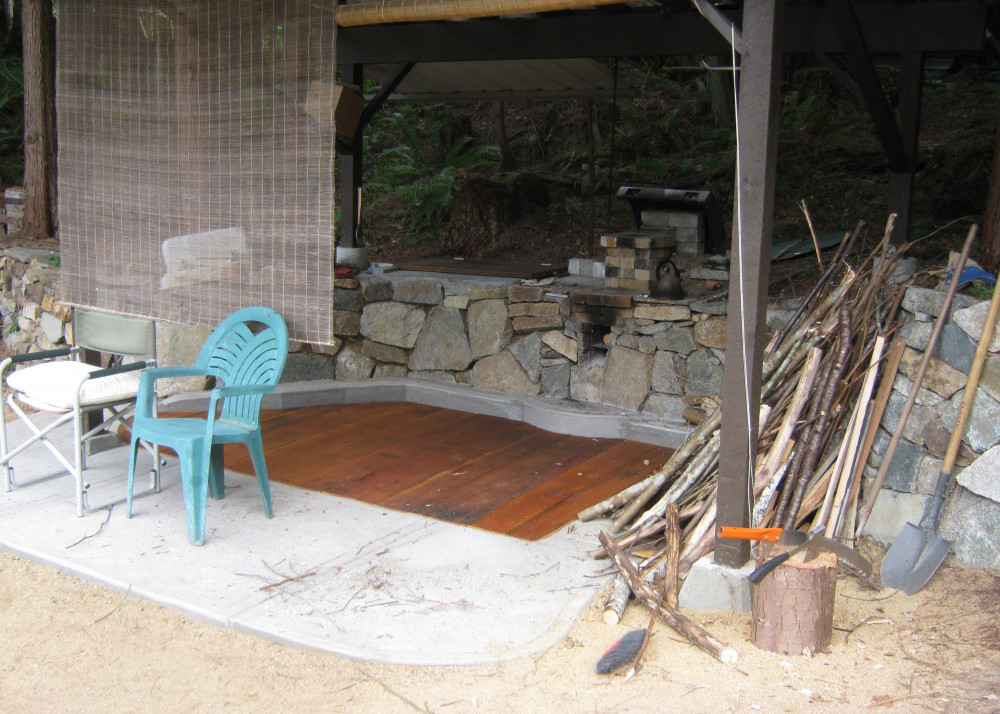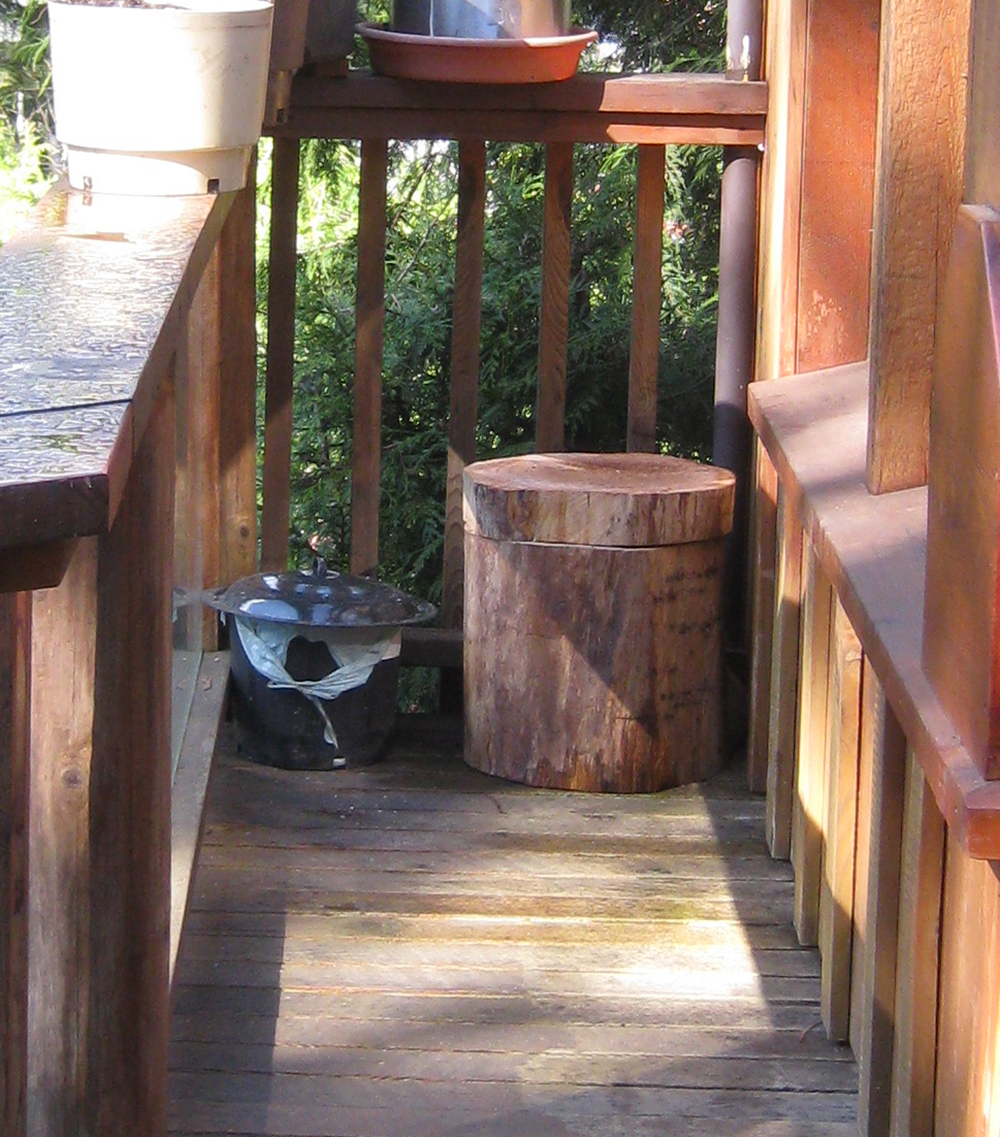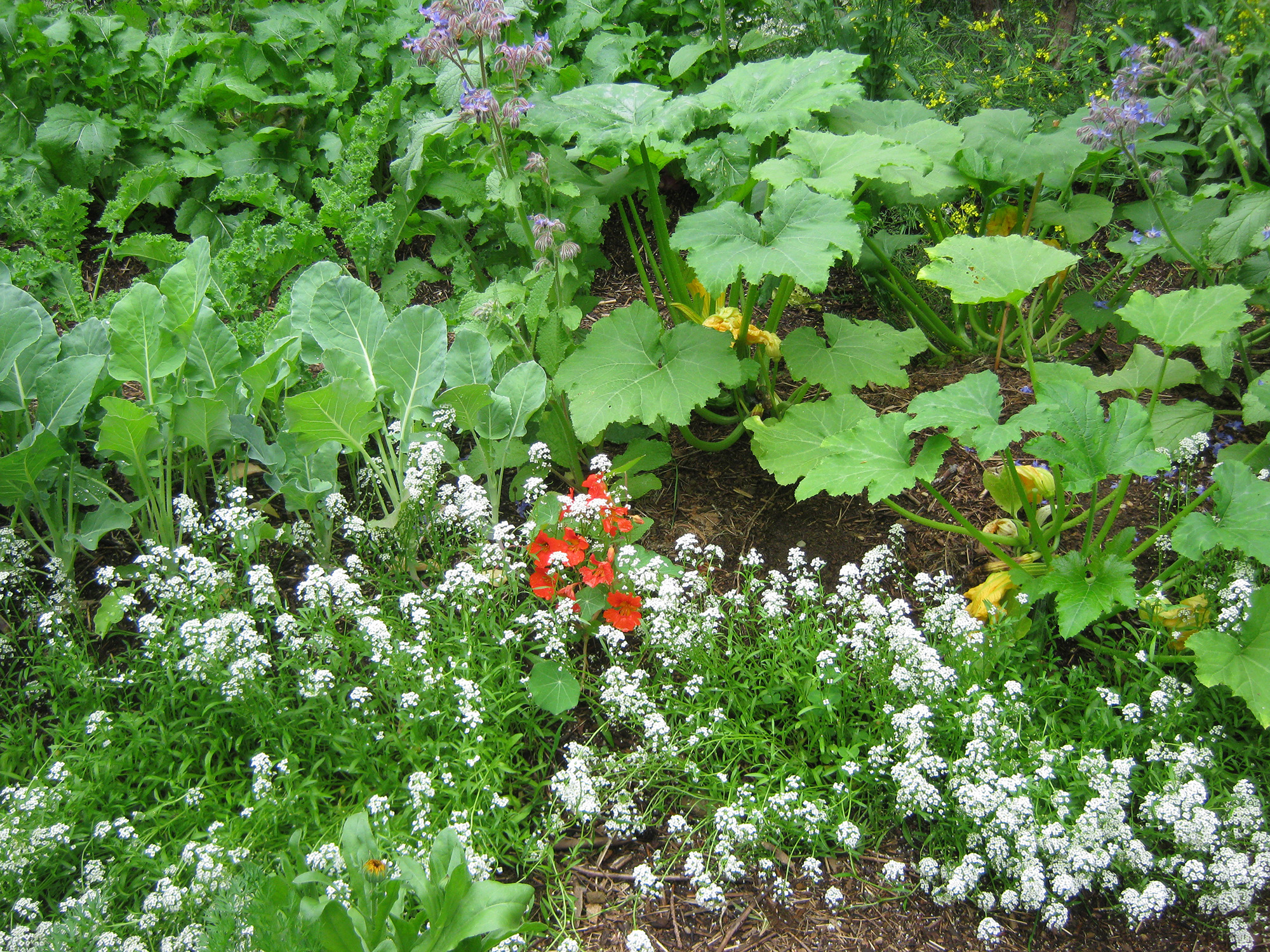
So far on this site I have concentrated on the gardening aspect of permaculture. But there really is so much more to it. Permaculture is a term that encompasses the designing of entire human habitations, whether they be city lots, small homesteads, large farms, or whole communities.
So, what is permaculture design?
Permaculture design is about creating living and working spaces that work within the context of the natural world, and focus on leaving no blemish on the face of the earth by our presence. It’s about giving as much as we take, or more.
As I talked about in this post, the permaculture toolbox holds a LOT of tools. These can come in the form of techniques and methods of going about things, or the use of physical items such as solar panels, solar dehydrators, composting toilets, and rocket stoves.
I am only renting where I live, and I don’t have money to invest, so I can’t be implementing the more expensive or expansive items from the permaculture toolbox. But there is always something we can do, no matter our situation.
My main focus is on gardening, and finding all the nooks and crannies for growing food on this shady property. But we have also embraced a few other permaculture tools from the toolbox. So today I’d like to talk a bit about those things.
Exploring permaculture tools
Last year, Rich built a rocket stove out of firebricks, for cooking outside. Originally it was just built right on the ground. But then he had a clever idea to build it into the rock wall we had recently finished. It looks very cool. And it works great.
There were a few draw backs to the original design, which are being addressed:
- Because it is buried in the ground, the rain-soaked earth made the stove very damp and hard to light during the rainy winter. Rich is going to rebuild it this summer, and put in a shield to protect the bricks from dampness.
- It is a bit tall for me to use, especially when I’m using the Dutch oven. So Rich did two things: he put in a cement step to stand on, and he built a rack from rebar to hang the pot from. This makes it much easier to move it around, and get it off the fire.
All in all it has been great fun learning how to use the rocket stove. And we’ve done many experiments, figuring out what we can cook on it. Rich has talked about making more videos, showing the different things that can be cooked on a rocket stove, but here is one he did showing how he baked a loaf of bread with it. Pop over and give him a thumbs up!
Cool, right? You get a little peak at our garden, and the dry stack rock wall we built, too. And here is the finished outdoor kitchen Rich built. It’s quite lovely.

We have baked cookies, biscuits, and pizza, as well as the usual stew and stir-fry on the rocket stove. We’ve also done a lot of stove-top granola, and I’ve done a few batches of honied ginger as well.
So far we haven’t come across anything that can’t be cooked on a rocket stove. If you use your imagination, and learn how to use tools such as a Dutch oven, you will be pleasantly surprised at what you can cook.
The main drawback of using the rocket stove is that it needs to be constantly fed, so you can’t just set it and leave it. You need to be there. If I were to build a rocket stove, I would have it so that it is self-feeding to a certain extent. But for now, this rocket stove works great, and we’ve enjoyed learning how to use it.
If you have any questions about rocket stoves, please drop me a line in the comments box at the end of this post.

More permaculture techniques
We do what we can. And one of the things we can do is try to conserve and reuse water. It’s really not that hard if you put your mind to it.
Ways we are conserving water
- We put our urine on the compost pile, rather than flushing it down the toilet. Think about how many times you flush the toilet, just to get rid of a little bit of pee. LOTS. And what a horrible waste, not just of the perfectly good water, but of very useful urine. It’s great to add to the compost pile, especially in the winter when ’greens’ are at a premium.
- We have also set up a couple of composting toilets. These are just bucket toilets, where we cover out ‘deposits’ with sawdust, and then dump the full buckets into a pit to compost for a year. This saves even more water from not flushing. It really doesn’t make any sense to me, to flush so much perfectly good water down the drain. So we are doing our best to stop doing that.
- In the summer I use my dish water for watering certain parts of the garden, such as the herb garden, and along the edge of the garden where the trees are. I really like reusing washing water. Seems like such a waste when there is only a little bit of biodegradable soap in there.

Food preservation
My favorite new way to preserve garden harvests is to ferment them. (Check out my Easy Fermented Vegetables recipe.) I am totally in love with fermented veggies. They are so delicious, adding a tangy spice to anything you add them too. I put them on top of just about everything!
Fermented veggies are also incredibly healthy for you. The fermenting process creates a probiotic food that is healthy for your gut and your immune system. It also enhances and actually raises the food value, increasing nutrients, and sometimes creating new ones through the magic of the fermenting process.
The reason I feel that fermenting is a great permaculture technique is because you can create and store it without using any energy – no electricity, no fossil fuels, no wood for cooking. It does need to be store in a cool place, but that doesn’t have to be the refrigerator. It can be a cold corner of the garage or basement. Or a root cellar, if you’re lucky enough to have one.
So, while I do plan on doing other types of food preservation such as canning and freezing, I really like the idea of fermenting not using any energy, and I’m glad I learned how to do it.
Dehydrating fruit and veggies can also be done without using energy if you build a solar dehydrator; or use the old technique of sun drying – just laying stuff out in the sun! (But perhaps a screen is handy to keep bugs and birds off.)
A solar dehydrator is pretty handy when you live in a more humid climate. Trying to sun-dry edibles can be a little tricky because they tend to rehydrate at night, so they take much longer to dry. And the longer they take, the more chance for mold to form.
So if you’re planning to dry a lot of fruit and vegetables, building a solar dehydrator might be a good idea. Here are some super cheap solar dehydrator plans for building two different types. Check them out and see what you think.
Using permaculture design, one small step at a time
These are just a few small things I am doing as I work toward lessening the impact of my presence on this lovely planet. There is so much more I want to do, and one day I will. But we all have to start somewhere, and these are the tiny steps I have been taking.
If you are interested in learning more about permaculture, search for a Permaculture Design Course (PDC) in your area. This is usually a 2-week long course that gives you a solid foundation of knowledge about permaculture, so that you can continue to learn on your own.
There are also many online resources, such as permies.com, Permaculture News, Geoff Lawton; and other Youtube stars, such as Charles Dowding, one of my gardening heroes.
So go out there and explore some online resources to educate yourself, and then take the steps that you can, where you are, and see where they take you.
As always, I am happy to hear from you and answer your questions, so please drop me a line in the comments below.
Health, Hope & Happiness
Tracy
This article may contain affiliate links. If you click on a link and make a purchase, I will receive a small commission, at no extra cost to you. See the full Affiliate Disclosure here.

Great ideas
Hi Tracy. I have found useful how your husband built this rocket stove and the changes to the original blue print he has been needed to make. I also have a project of building a rocket stove and I hadn’t thought that it could get damp in the rainy season. So before I build it I’ll design this shield Rich is talking about. Thank you very much! I came to this post in a very timely moment.
Thanks for stopping by, Abel. I’m glad that you got some useful information! Best of luck with your rocket stove build. It really is a great way to cook with little fuel, and no pollution. I love it!
Cheers
Tracy
Well! This is really of interest to me here and I must say that permaculture is quite a great way to conserve water and all within the right frame of the right design. But I have a problem with this, would it be hygienic to keep water in such a way and also, is it worthy to try to go through all these just to get water conserved?
thanks
Hi Rodarrick;
Whether it is worth taking these steps to conserve water depends on where you live, I suppose. In dry areas, it is absolutely necessary to take steps to use as little water as possible for non-essential things, and save it for important things like drinking and watering a garden.
Where I live right now, we always have a water shortage during the summer because there are too many people for the small water storage that we have in the area. So I like to save our water for the garden, rather than flushing it down the toilet. And reusing the washing up water just makes sense. But I don’t store it. I pour it on the ground immediately, either watering the trees or near the herb garden.
Thanks for visiting and asking questions.
Cheers
Tracy
I had no idea about permaculture. Your post gave me a good idea of permaculture design and how it works. Thank you for this article. I enjoyed the post very much. What will be the cost of making a rocket stove? And is this oven healthy? I am very interested to know about Permaculture Design. I hope others reading your post will benefit.
Hi Alam;
Making a rocket stove can actually be quite inexpensive. We make ours just using fire bricks, stacked up but not cemented together. So it’s quick and easy. And it is extremely healthy to use because it emits almost no smoke at all.
I will write an article about building the rocket stove sometime this month. I hope you come back and take a look at it.
Thanks for your visit.
Tracy
Hello Tracy, thanks for sharing such a wonderful article about permaculture design. Growing up, I have seen something quite similar to this at my grandmother’s place and its a pleasure learning about it more after such a long time. I love the feeling I get when I think about having something like this in my compound and getting to sit there with my family. How easy is it for me to build my own?
Thank you for visiting my site and leaving a comment. Your vision of you and your family enjoying a permaculture garden is lovely. I hope you’re able to bring it to life one day.
Cheers
Tracy
I really liked your article. I think Permaculture design is basically a multi-faceted, incorporated and environmentally agreeable strategy for planning human-focused scenes. A very good article with useful information. I will share your article on my social media. Looking forward to more beautiful articles related to this in the future. All the best